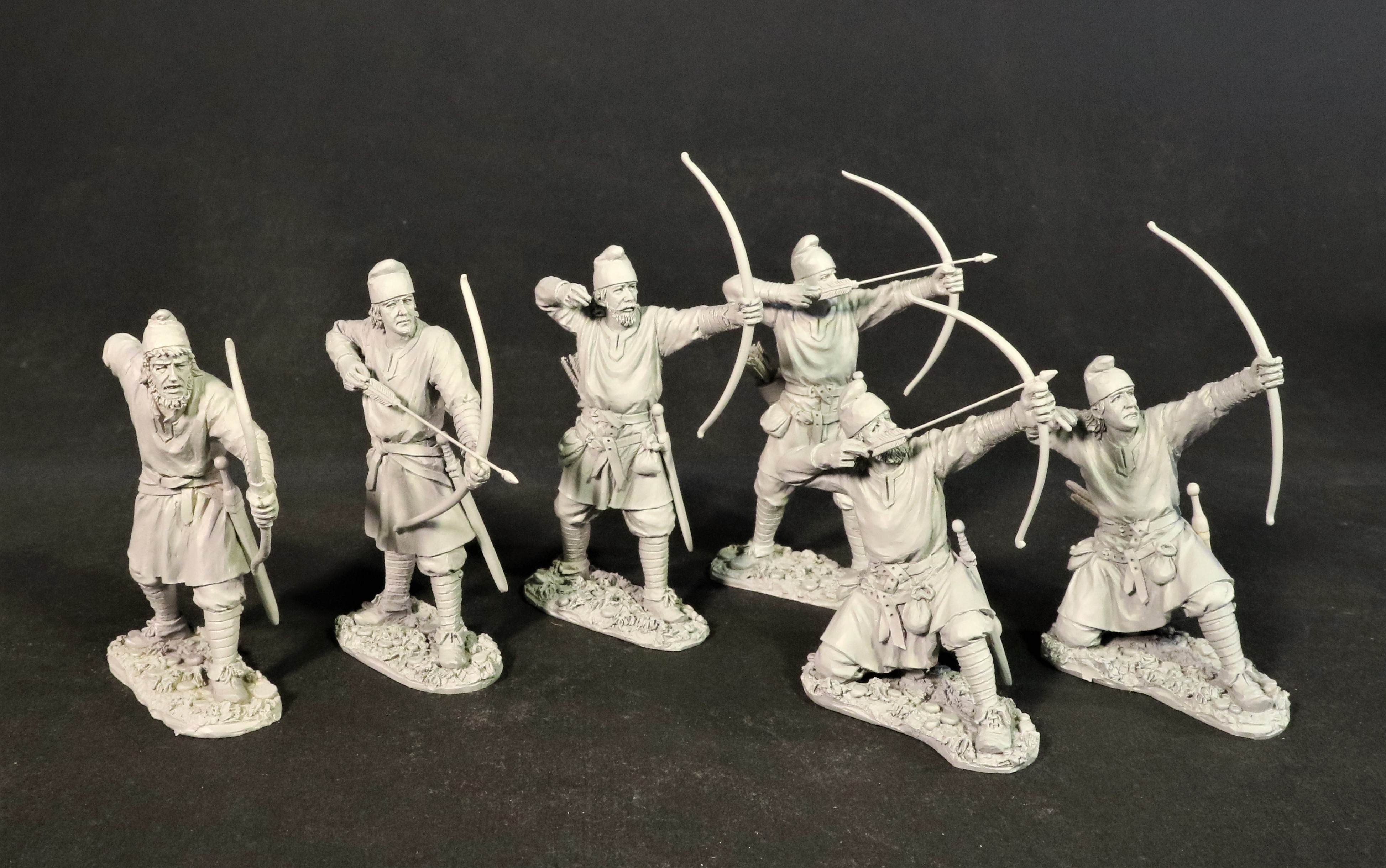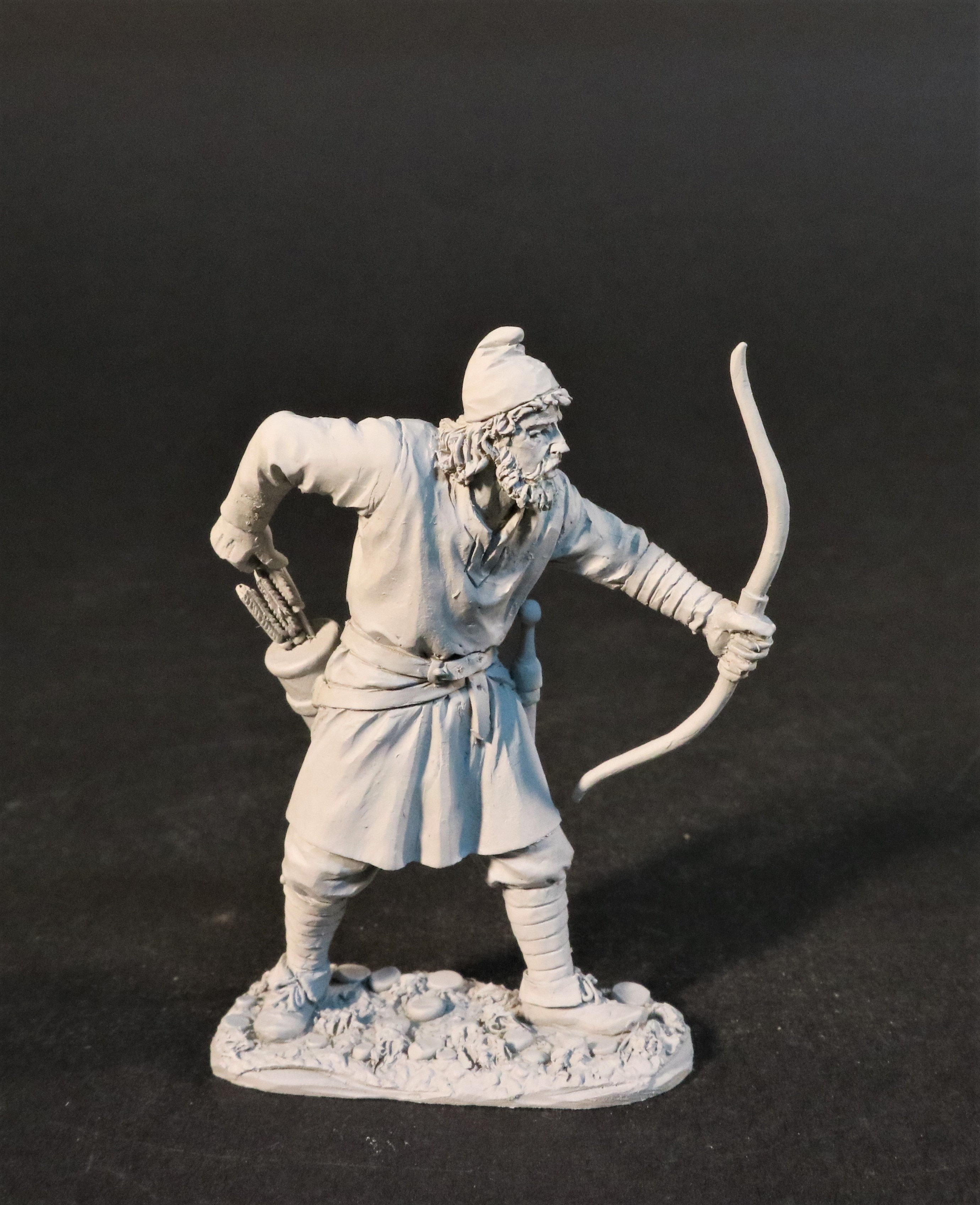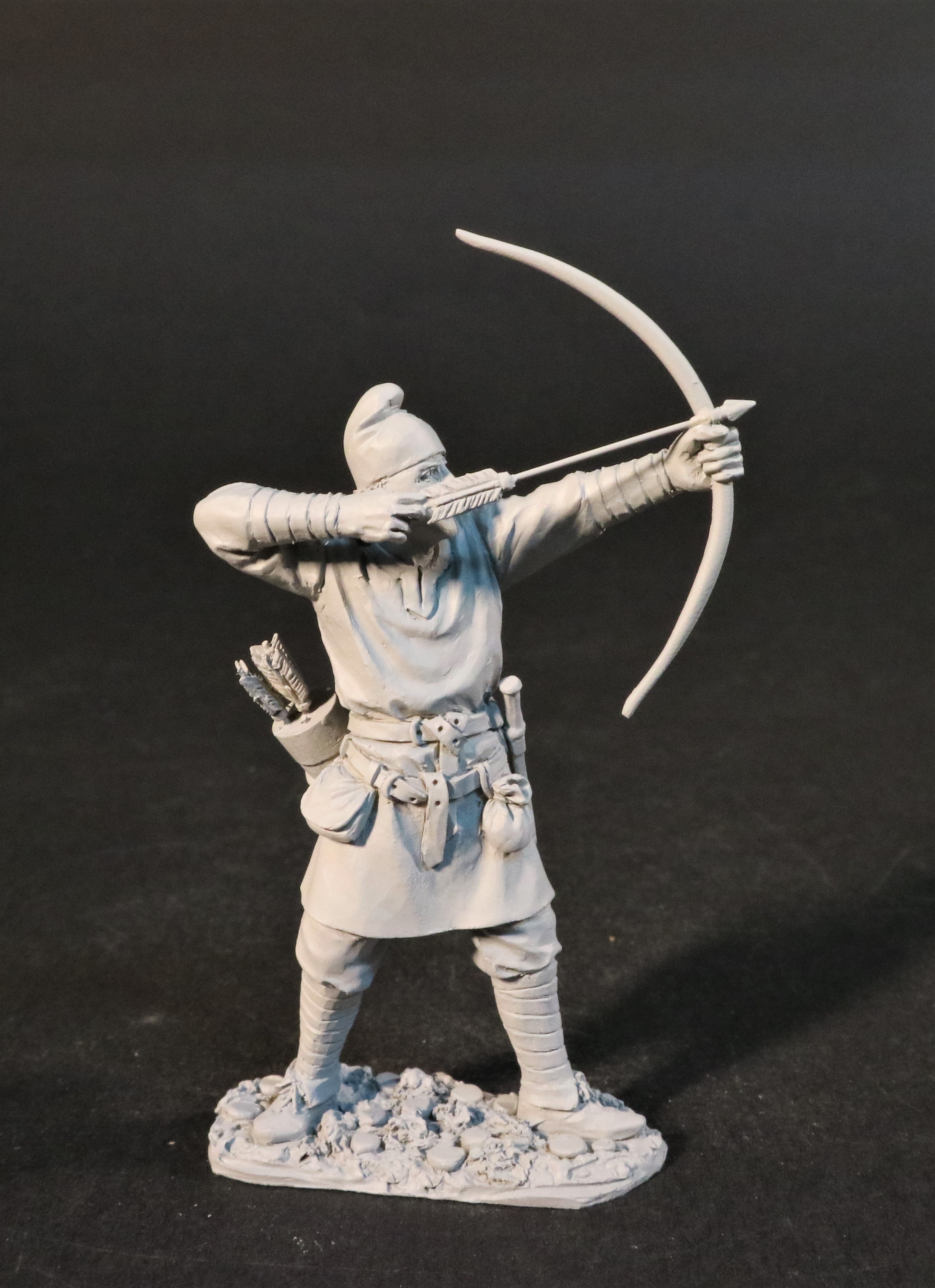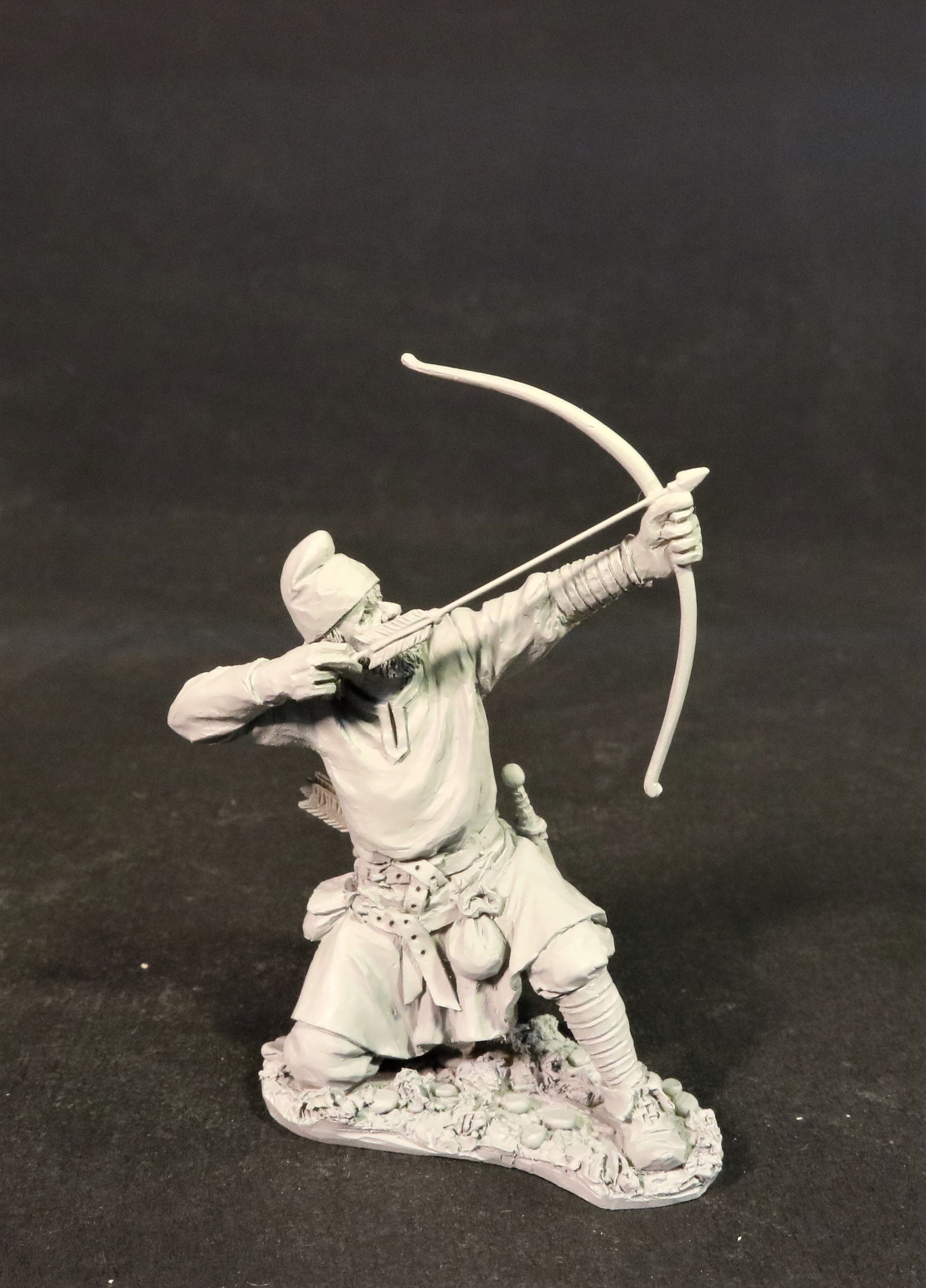31st Mar 2022
John Jenkins: Saxon Archers
The death of King Edward the Confessor of England in January 1066 had triggered a succession struggle in which a variety of contenders from across north-western Europe fought for the English throne. These claimants included the King of Norway, Harald Hardrada.
The Battle of Stamford Bridge took place at the village of Stamford Bridge, East Riding of Yorkshire, in England on 25 September 1066, between an English army under King Harold Godwinson and an invading Norwegian force led by King Harald Hardrada and the English king's brother Tostig Godwinson. After a bloody battle, both Hardrada and Tostig along with most of the Norwegians were killed. The battle has traditionally been presented as symbolising the end of the Viking Age,

Harold's victory over the invading Viking army was short-lived. Three days after the battle at Stamford Bridge, on 28 September, a second invasion army led by William, Duke of Normandy, landed in Pevensey Bay, Sussex, on the south coast of England. Harold had to immediately turn his troops around and force-march them southwards to intercept the Norman army. Less than three weeks after Stamford Bridge, on 14 October 1066, the English army was decisively defeated and King Harold II fell in action at the Battle of Hastings, beginning the Norman conquest of England

Many different weapons were created and used in Anglo-Saxon England between the fifth and eleventh centuries. Spears, used for thrusting and throwing, were the most common weapon. Other commonplace weapons included the sword, axe and knife.
Weapons also had symbolic value for the Anglo Saxons, apparently having strong connections to gender and social status. Weapons were commonly included as grave goods in the early Anglo-Saxon burials. The vast majority of these weapons were buried in graves of men, but they were also buried in the graves of women. In a non funerary context, weapons were occasionally deposited in the ground or near rivers.
The establishment of a literate Christian clergy in Anglo Saxon England resulted in the production of several textual sources that describe weapons and their use in battle.

Artistic depictions of soldiers bearing weapons can also be found in some Anglo Saxon sculpture. Depictions also appear in manuscript illustrations and of course in the embroidered Bayeux Tapestry.
However, the artists may have been following artistic conventions concerning the depiction of warriors and weapons rather than accurately portraying the use of such items in their society.
It is accepted that Anglo Saxons primarily used the bow to hunt, and therefore it is believed that most men would have been skilled in its use.

Examples of Anglo Saxon archery equipment are rare. Iron arrowheads have been discovered in approximately 1% of early Anglo Saxon graves, and traces of wood from the bow stave are occasionally found in the soil of inhumations.
Although rarely found in graves, bows appear more frequently in Anglo Saxon art and literature. On the eight century Northumbrian Franks Casket, an archer is shown defending a hall from a group of warriors.
There are 29 archers depicted on the eleventh century Bayeux Tapestry. Only one of these is an Anglo Saxon archer, the remainder are Norman.
